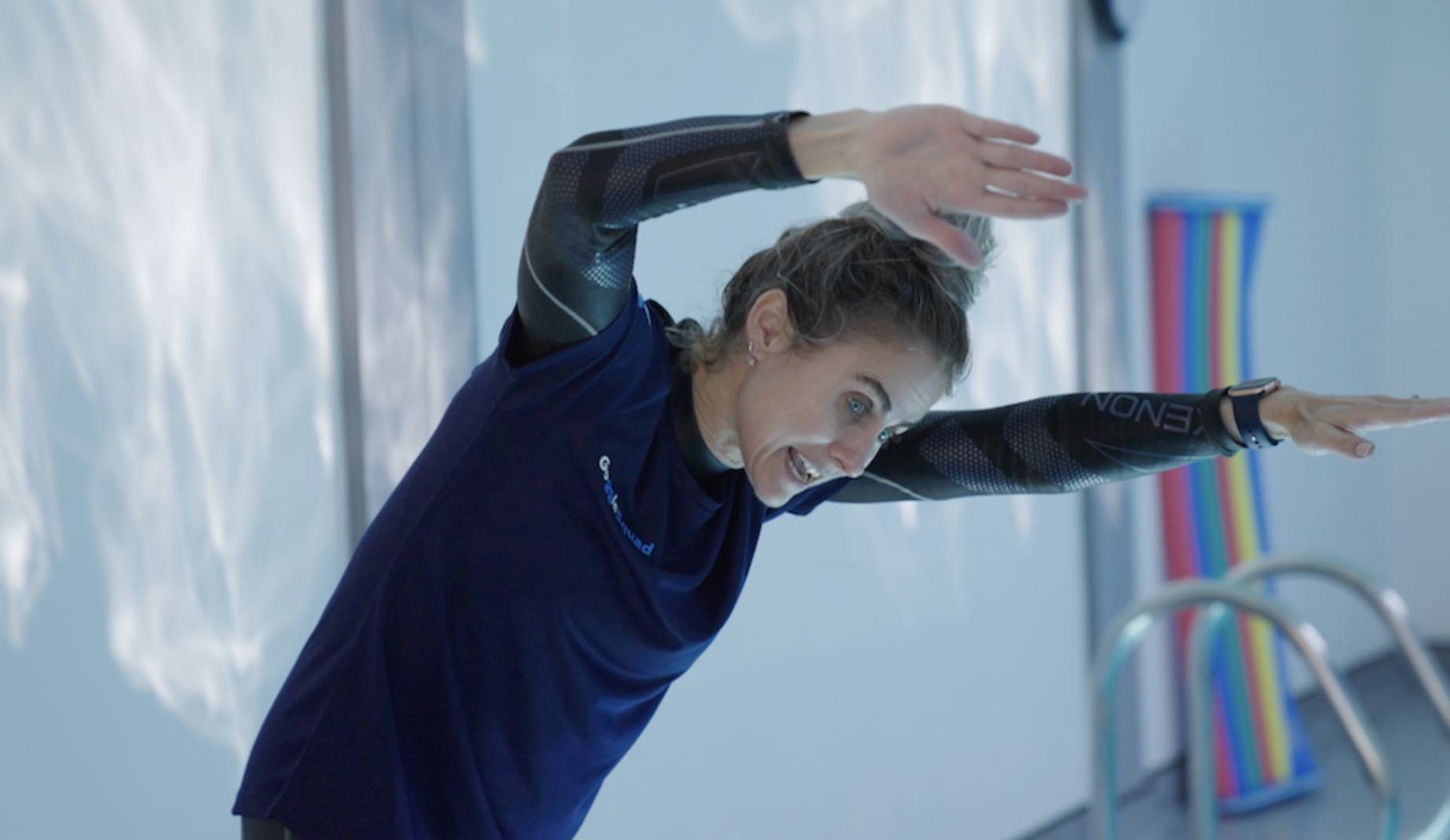The Four Main Swimming Strokes
Nicola Ayers demonstrating front crawl in a lesson
One of the first steps to becoming a confident swimmer is mastering the four basic swimming strokes: freestyle, backstroke, butterfly, and breaststroke.
Each stroke has its own unique technique and benefits, and mastering these four strokes will enable swimmers to become proficient in the water.
Freestyle: The Fastest And Most Efficient Stroke
Freestyle is the most common swimming stroke and is often the first one taught to beginners. Also known as the front crawl, freestyle involves alternating arm strokes and flutter kicks while breathing rhythmically. This stroke provides an excellent full-body workout that engages multiple muscle groups, including the arms, shoulders, back, and legs. Freestyle is a low-impact exercise that is suitable for people of all ages and fitness levels, making it an ideal stroke for beginners.
The technique for freestyle involves extending one arm forward while the other arm pulls back, propelling the body forward. As the arm pulls back, the swimmer kicks their legs in a flutter kick, providing additional propulsion. To breathe, the swimmer turns their head to the side while one arm is extended forward, taking a breath before turning their head back down into the water. The key to freestyle is maintaining a smooth and efficient stroke while keeping the body in a streamlined position.
Backstroke: An Excellent All-Round Workout
Backstroke is another basic swimming stroke that is often taught after freestyle. This stroke involves lying on the back while kicking the legs and alternating arm strokes in a windmill motion. Backstroke provides an excellent workout for the arms, shoulders, back, and legs and is a great way to improve overall swimming fitness.
The technique for backstroke involves maintaining a straight body position while kicking the legs in a flutter kick. The arms move in a windmill motion, with one arm moving over the head while the other arm pulls back. The swimmer breathes by turning their head to the side while one arm is extended back. The key to backstroke is maintaining a smooth and efficient stroke while keeping the body in a streamlined position.
Butterfly: An Advanced Stroke Which Requires Coordination
Butterfly is a more advanced swimming stroke that requires a greater level of skill and strength. This stroke involves a simultaneous arm stroke while performing a dolphin kick. Butterfly provides an excellent full-body workout that engages multiple muscle groups, including the arms, shoulders, back, and core.
The technique for butterfly involves a simultaneous arm stroke where the arms move in a circular motion, with the hands entering the water together in front of the swimmer's head. At the same time, the swimmer performs a dolphin kick, which involves both legs moving up and down simultaneously. The swimmer takes a breath by lifting their head out of the water at the end of each stroke. The key to butterfly is maintaining a smooth and efficient stroke while coordinating the arm and leg movements.
Breaststroke: The Popular Recreational Swimming Stroke
Breaststroke is another basic swimming stroke that involves a frog-like leg kick and a sweeping arm motion. This stroke provides an excellent workout for the arms, shoulders, back, and legs and is often used in competitive swimming events.
The technique for breaststroke involves a frog-like leg kick where the feet move towards the buttocks while the legs are bent at the knees. The arms move in a sweeping motion, starting in front of the swimmer's head and moving out to the sides before coming together in front of the chest. The swimmer breathes by lifting their head out of the water after each arm stroke. The key to breaststroke is maintaining a smooth and efficient stroke while coordinating the arm and leg movements.
Learning the four basic swimming strokes is an essential part of becoming a confident swimmer. Freestyle, backstroke, butterfly, and breaststroke each have their own unique techniques and benefits, and mastering these strokes will enable swimmers to become proficient in the water.

